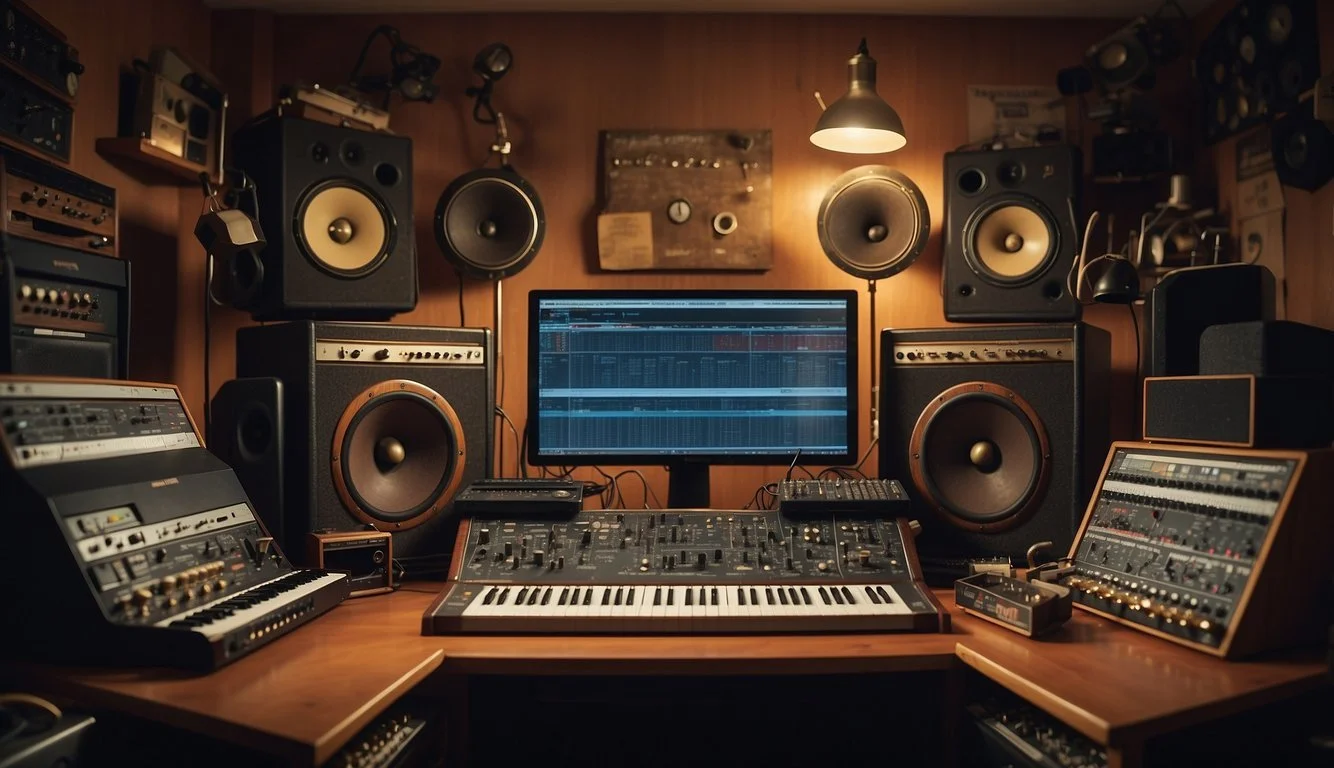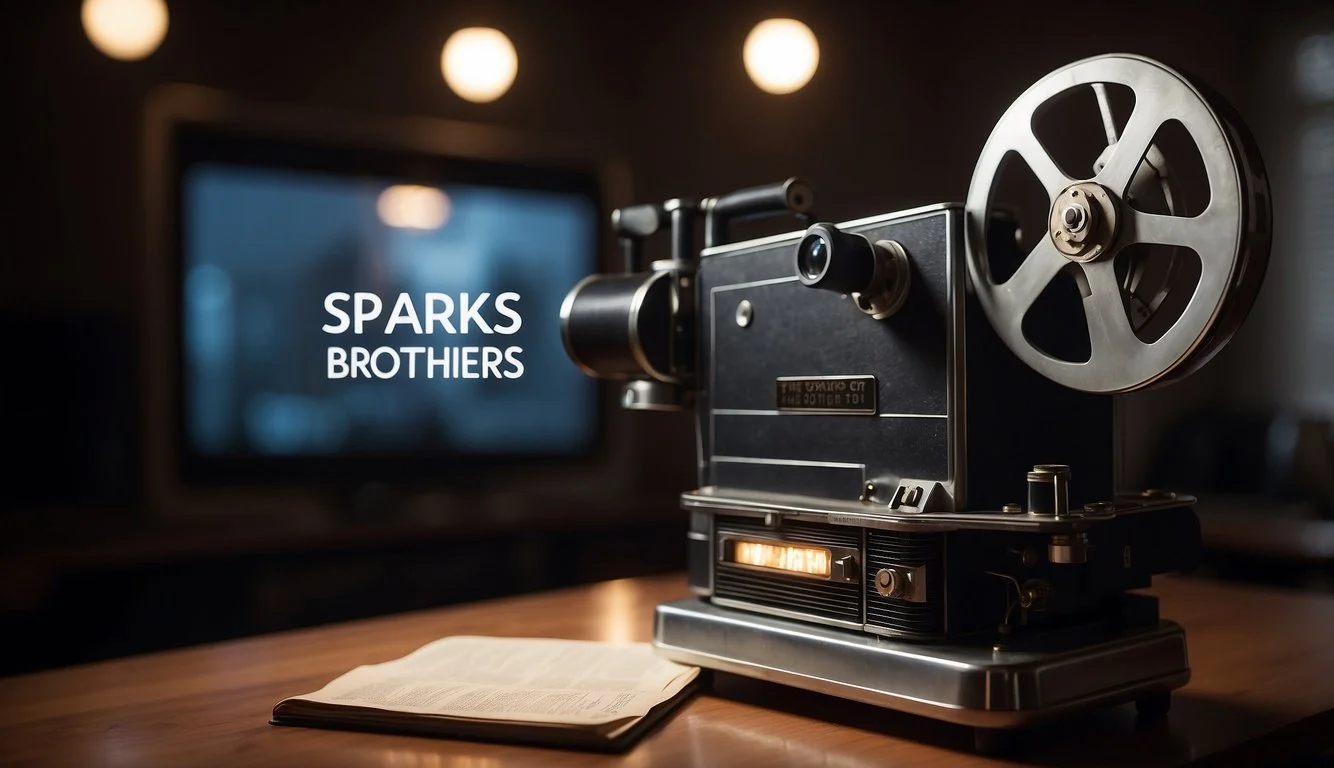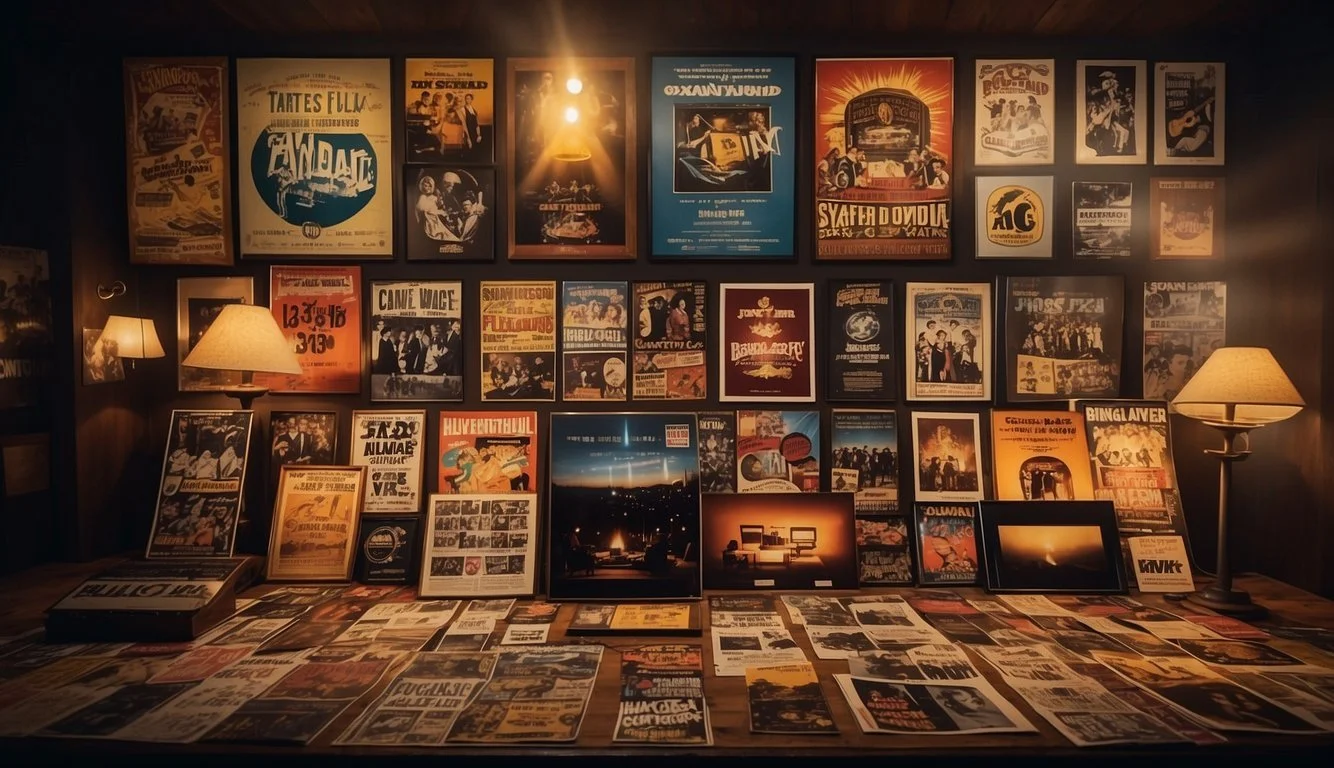Documentary Review: The Sparks Brothers (2021)
A Fascinating Look at an Iconic Duo
The Sparks Brothers (2021), a documentary directed by Edgar Wright, delves into the eccentric world of Ron and Russell Mael, the duo behind the band Sparks. With Wright's surreal visual sensibility and the Mael brothers' on-screen wit, this film offers a captivating journey through 50 years of art-pop innovation.
Viewers are immediately drawn to the alluring combination of visual gags and lighting cues, which highlight the deep affection Wright has for the subject. As evident from various reviews, the documentary's charm lies in Wright's seamless use of animation and stop-motion, bringing the oddity of Sparks to vivid life.
Sparks may be one of the most intriguing bands that casual music fans have never heard of, making The Sparks Brothers a must-watch. This celebration of creativity and uniqueness in music history is sure to enchant both long-time followers and new audiences alike.
Background on the Sparks Brothers
Ron and Russell Mael, who form the band Sparks, are renowned for their unique blend of art pop and rock.
Ron Mael plays keyboard, while Russell Mael handles the vocals. They are recognized for their witty and idiosyncratic lyrics, matched with an eclectic and innovative musical style.
The brothers started their journey in the early 1970s. Their initial name for the band was "Halfnelson," but they soon changed it to Sparks. Over their career, they have released over 25 albums.
Member Role Unique Trait Ron Mael Keyboardist Known for his stoic stage presence Russell Mael Vocalist Recognized for his falsetto vocal range
Despite their critical acclaim, mainstream success eluded them in the United States. They found significant success in the UK and Europe.
They've influenced numerous musicians and bands with their innovative approach. Their collaborations span various genres, making them a versatile and enduring act in the music industry.
Their style includes elements of glam rock, new wave, and synth-pop, showing a continual evolution in their sound.urity
The brothers maintain a low public profile, adding to their enigmatic persona. Their smattering of hits like "This Town Ain't Big Enough for Both of Us" has cemented their place in the annals of music history.
Director's Vision and Approach
Edgar Wright's direction in "The Sparks Brothers" brings his distinctive flair and love for the band to the forefront. Utilizing a blend of visual styles and creative storytelling, Wright ensures that both longtime fans and newcomers are thoroughly engaged.
Edgar Wright's Involvement
Edgar Wright, the British director known for films like Shaun of the Dead and Baby Driver, takes his admiration for Sparks to new heights in this documentary. His enthusiasm is evident in every frame, crafting a film that's both informative and entertaining.
Wright's background in blending music with visuals perfectly complements the eclectic nature of Sparks. His directorial choices reflect his deep respect for the Mael brothers, ensuring their story is told with the same wit and innovation that defines their music careers.
Creative Storytelling Techniques
Wright's use of surreal visual sensibility, animation, and stop-motion brings a unique vibrancy to "The Sparks Brothers." These techniques transform the documentary into an experience that mirrors the band's quirky and avant-garde ethos.
Interspersed with interviews, concert footage, and archival material, Wright's approach makes the documentary informative yet visually engaging. The use of visual gags and lighting cues not only keeps the viewer entertained but also encapsulates the dynamic spirit of Sparks.
In sum, Wright's innovative approach and dedication to the subject matter make the documentary a standout piece, honoring the Mael brothers with the flair they deserve.
Historical and Cultural Context
The Sparks Brothers documentary delves into the extensive history of Sparks, a band formed by brothers Ron and Russell Mael in 1971.
Hailing from Los Angeles, they emerged during a time of musical experimentation. This was the post-Beatles era, where genres like glam rock, new wave, and synth-pop were starting to take shape.
Sparks quickly became known for their distinctive blend of rock and pop sounds, marked by Ron's quirky keyboard playing and Russell's falsetto vocals. They gained a cult following through their eccentric performance style and witty lyrics, often addressing themes of love, society, and absurdity.
During the 1970s, Sparks found success in both the US and the UK, particularly with albums like Kimono My House and singles such as "This Town Ain't Big Enough for Both of Us". This track showcased their unique fusion of art-rock and pop, resonating with audiences on both sides of the Atlantic.
In the 1980s and 1990s, the group's sound evolved, incorporating elements of electronic music. They collaborated with renowned producers, further cementing their influence on the new wave and synth-pop movements. Albums like No. 1 in Heaven and Angst in My Pants exemplify their adaptability and continued relevance.
By the 2000s, Sparks had solidified their position as pioneers in the music world, maintaining a devoted fanbase and influencing numerous artists across various genres. Their work reflects a continuous exploration of musical styles, making them a quintessential part of the cultural and historical music landscape.
The documentary, directed by Edgar Wright, captures this journey and highlights the brothers' innovative spirit, illustrating their significant impact on the music industry over the past five decades.
Analysis of the Documentary Structure
The documentary "The Sparks Brothers," directed by Edgar Wright, presents a detailed narrative through its unique structure. This analysis will cover how the film's narrative flow and the use of interviews and archival footage contribute to its storytelling technique.
Narrative Flow
The narrative of "The Sparks Brothers" unfolds chronologically, starting with the band's formation in the late 1960s. Through a series of well-paced segments, the film explores each decade of Sparks' career, emphasizing their evolution and reinvention.
Wright's sense of humor and visual style blend seamlessly with the storytelling. The documentary features animated sequences and visual gags that complement the eccentricity of Ron and Russell Mael. Each chapter of the film maintains engagement by balancing informative content with entertaining elements.
The structure also includes thematic breaks that focus on specific aspects of the band's history, such as their influence on the music industry and their relationship with fans. This approach ensures the documentary doesn't become monotonous, keeping the viewers intrigued throughout its runtime. The pacing allows for sufficient depth without overwhelming the audience with information.
Interviews and Archival Footage
Interviews serve as the backbone of the documentary. Wright uses a mix of contemporary interviews with Ron and Russell Mael, music industry insiders, and longtime fans. These perspectives provide a multifaceted view of Sparks' impact and legacy. Notable personalities, including Steve Jones of the Sex Pistols, add credibility and diverse insights.
Archival footage is meticulously curated, showcasing rare concert videos, television appearances, and behind-the-scenes clips. This footage bridges past and present, allowing viewers to witness Sparks' journey over the decades. The combination of interviews and archival material helps paint a vivid picture of the band's unconventional path.
Visual and audio excerpts from the band's discography are strategically placed throughout the film. By interweaving music clips with interviews and archival footage, the documentary offers an immersive experience, illustrating the enduring appeal of Sparks.
Critical Reception and Reviews
"The Sparks Brothers" received widespread acclaim from critics and audiences alike. It was praised for its unique blend of humor, thorough exploration of its subjects, and creative presentation.
Expert Critiques
Critics have hailed Edgar Wright's direction in "The Sparks Brothers" as a perfect match for the eccentric style of Sparks. According to Roger Ebert's review, the film’s visual gags and lighting cues showcase Wright's love for the band.
Renowned publications like Variety describe the documentary as an “irresistible celebration” of the Mael brothers' 50-year career. Additionally, visual techniques such as stop-motion animation highlight the surreal and eccentric nature of Sparks, enhancing the overall viewing experience.
Audience Response
Audience reception to "The Sparks Brothers" has been overwhelmingly positive, with viewers appreciating both the humorous and heartfelt moments. The film has attracted not just long-time fans of the band but also newcomers who were unfamiliar with Sparks' work.
Social media comments and user reviews on platforms like Rotten Tomatoes reflect a strong appreciation for the documentary's ability to convey the quirky charm of the Mael brothers. Many viewers expressed surprise at discovering the band's extensive and influential history in a thoroughly entertaining manner.
Awards and Recognitions
"The Sparks Brothers" has garnered attention at various film festivals, including the Sundance Film Festival, where it premiered in January 2021. The film’s creative approach and in-depth portrayal of Sparks have earned it critical acclaim and several awards.
Additionally, the documentary has been recognized for its innovative use of animation and archival footage, setting it apart from more traditional music documentaries. The unique stylistic choices made by Edgar Wright have played a significant role in the film's recognition in the industry.
Impact on Music Documentary Genre
"The Sparks Brothers," directed by Edgar Wright, made a noticeable impact on the music documentary genre. It blends Wright's signature kinetic filmmaking style with an in-depth look at the careers of Ron and Russell Mael of Sparks.
Edgar Wright's approach adds a fresh dynamism to the documentary format. His use of rapid editing, humor, and narrative flair transforms traditional documentary storytelling into something lively and engaging.
Multiple musicians and artists were interviewed for the film, showcasing how Sparks influenced diverse creative fields. This comprehensive approach highlights the band's extensive influence over half a century.
Wright's film demonstrates how music documentaries can appeal not only to fans of the artist but also to a broader audience. The engaging narrative and detailed exploration of the band's history set a new standard for the genre.
The mix of archival footage, interviews, and concert clips enriches the storytelling, making it more immersive. This meticulous combination of different media formats creates a multi-faceted view of the band's legacy.
In sum, "The Sparks Brothers" shows that music documentaries can be both informative and wildly entertaining. Wright’s innovative approach redefines how these stories can be told, thus raising the bar for future music documentaries.
With this film, Wright cements his place not just as a director of fiction but as a formidable force in documentary filmmaking as well.
Personalities of Ron and Russell Mael
Ron and Russell Mael, the creative forces behind the band Sparks, are known for their unique and contrasting personalities.
Ron Mael is often seen as the stoic and enigmatic presence. With his signature deadpan expression and distinctive mustache, he cuts an imposing figure. His wry sense of humor comes through in both his lyrics and performances, adding a surreal edge to their music.
Russell Mael, on the other hand, is the charismatic and energetic frontman. Known for his enthusiastic stage presence and wide vocal range, he captivates audiences with ease. His engaging demeanor and dynamic movement make their live shows unforgettable.
Their complementary personalities play a significant role in their creative process. While Ron’s meticulous and calculated approach to songwriting provides structure, Russell’s expressive execution brings the songs to life.
Visual Style also highlights their personalities. Ron’s reserved attire contrasts with Russell’s more flamboyant choices, reinforcing their on-stage personas.
This interplay between Ron's subtlety and Russell's exuberance forms the backbone of Sparks' enduring appeal. Together, they balance each other out, creating a dynamic that keeps their work fresh and engaging.
Cinematography and Visuals
Edgar Wright brings his unique visual flair to The Sparks Brothers. He uses a mix of animation styles, including stop-motion, which adds a whimsical quality to the documentary. This approach keeps the audience engaged, breaking up traditional talking head interviews with visually stimulating segments.
Lighting plays a significant role in this film. Each interview setting is thoughtfully designed, with lighting cues that complement the overall tone. These choices enhance the storytelling, making each frame visually appealing and meaningful.
The documentary cleverly incorporates archival footage, seamlessly integrating it with contemporary interviews. This blend provides a rich visual history of Sparks' career, creating a dynamic viewing experience.
Wright’s surreal visual sensibility aligns perfectly with the eccentric nature of Ron and Russell Mael. His use of graphic design elements, quick cuts, and playful visual gags further accentuates the brothers' quirky charm. Each visual element is crafted to reflect the uniqueness of the band's 50-year journey.
A visually striking moment includes the use of montage sequences that capture the essence of different eras. These montages are not just informative but also aesthetically pleasing, contributing to the documentary's rhythm and pace.
The concert footage is particularly noteworthy. It captures the energy and charisma of Sparks’ live performances, offering viewers a glimpse into their theatrical and often avant-garde stage presence.
The combination of various visual techniques makes The Sparks Brothers a visually captivating documentary. This method helps in narrating the unconventional story of Sparks in a manner that is as unique as the band itself.
Soundtrack and Musical Scores
Edgar Wright's The Sparks Brothers is a documentary that thrives on its soundtrack and musical scores.
The film showcases a comprehensive collection of Sparks' songs, capturing their eclectic style and evolution over five decades. With hits like "This Town Ain't Big Enough for Both of Us" and "Amateur Hour," the soundtrack covers the band's diverse discography, reflecting their unique blend of rock, pop, and electronic music.
Wright's love of music shines through in the way he integrates songs into the narrative. Each track enhances the storyline, providing both context and emotional depth. The choice of music is not just a backdrop but an essential element that drives the film forward, making each scene more engaging.
The documentary also includes rare live performances and studio recordings, giving audiences an intimate look at Sparks' creative process. This inclusion adds authenticity and depth to the film, allowing viewers to appreciate the intricacies of the band's musical talent.
For fans and newcomers alike, the carefully curated soundtrack serves as both a nostalgic trip and a comprehensive introduction to Sparks' music. It offers an auditory journey that parallels the visual storytelling, ensuring the film is as engaging to listen to as it is to watch.
In The Sparks Brothers, the soundtrack and musical scores are not mere accompaniments but central to the film's appeal. Wright's meticulous selection and effective use of music highlight Sparks' lasting influence and artistic innovation, making the documentary a richly immersive experience.
Conclusion and Final Thoughts
The Sparks Brothers exemplifies the unique creativity and musicianship of Ron and Russell Mael.
Directed by Edgar Wright, the documentary captures the idiosyncratic charm that defines the band Sparks.
Wright's direction employs a mix of visual gags and innovative animation techniques which amplify the eccentric nature of the band.
Featuring interviews with fans and industry professionals, the film provides a comprehensive look into Sparks' 50-year career.
Wright's personal admiration for the band is evident, offering an affectionate tribute that both entertains and informs.
The documentary's seamless integration of performance clips and archival footage adds depth to the narrative.
Audiences new to Sparks will find a well-curated introduction, while long-time followers will appreciate the detailed exploration of their journey.









